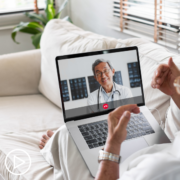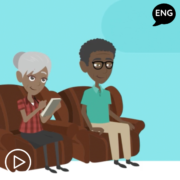What Are Best Practices for Multiple Myeloma Patients Utilizing Telemedicine?
What Are Best Practices for Multiple Myeloma Patients Utilizing Telemedicine? from Patient Empowerment Network on Vimeo.
What are some ways that patients and providers can make the most of multiple myeloma telemedicine visits? Dr. Joseph Mikhael shares things that he has found helpful in interacting via telehealth visits with his patients and how he tries to approach different types of visits.
See More From the Myeloma TelemEDucation Empowerment Resource Center
Related Resources:

Will Telemedicine Be an Advantage for Multiple Myeloma Patients? |

What Multiple Myeloma Populations Will Benefit from Telemedicine? |

How Will Telemedicine Impact Multiple Myeloma Clinical Trials? |
Transcript:
Dr. Joseph Mikhael:
Well, the best practices for telemedicine are really going to depend on the nature of the clinic, the way the provider likes to interact with their patients, and the way the patients like to interact with them. I think one of the beauties of the multiple platforms we have is that we can leverage them, that beautiful connection that we develop between a physician or a provider and their patient, we can continue obviously not to the same extent that using electronic means, and so I’ve really tried to make sure that I don’t look at this as a half visit or as a partial visit.
I think psychologically is my first important tip that we look at this as another very important physician-patient interaction. Secondly, I try to make sure that my patients are comfortable with this modality, that we’ve had time to work through the technology, so we’re not worrying about who’s on mute, who’s not on mute, so that when we discuss things, we can discuss things properly, and that thirdly, we as much as possible, try to engage a full visit, whether a family member is going to be with the patient, whether a nurse practitioner, a nurse or pharmacist is going to join me on this side, that we really try to reproduce what we know works well in the clinic.
So, that the patient can feel comfortable so that they can be heard, because sometimes it’s difficult when you’re on the other side of a computer or phone to really be heard.
So psychologically, being prepared for this and getting into the specifics of making sure we’re comfortable with the technology, and then thirdly, really as much as possible, trying to reproduce that magic that we feel like when we have a face-to-face interaction.










